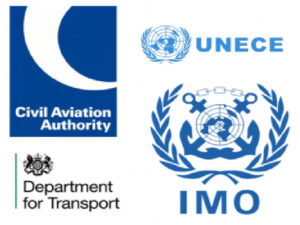Radioactive material is used in medicine, manufacturing, power generation and research. Like other products and materials, radioactive material is shipped from one location to another.
The movement of radioactive material is wide-ranging and includes, radio-pharmaceuticals needed for hospitals and sealed radioactive sources needed in the construction industry. Radioactive materials are within Class 7 of the Dangerous Goods classes.
Shipping radioactive material is highly regulated and comes with inherent safety risks that demand careful attention and adherence to stringent regulations. The amount and type of radioactivity present in the shipment determines how it can be transported and what kind of controls are required.
Why is Radioactive Material of concern?
Radioactive materials emit ionizing radiation, which can harm living organisms and the environment. Common examples include medical isotopes, nuclear fuel, and radioactive waste. Radioactive materials released into the environment can cause air, water, surfaces, soil, plants, buildings, people, or animals to become contaminated. Exposure to high levels of ionizing radiation can cause severe health effects.
Transportation Risks and Challenges
Transporting radioactive materials poses unique challenges due to the potential release of ionizing radiation in case of accidents or mishandling. The risks can be categorised into several areas:
1. Accidents and Collisions: The primary concern during transportation is the risk of accidents or collisions. An accident, especially one involving a vehicle carrying radioactive materials, can lead to the release of harmful radiation.
2. Material Containment Failure: Radioactive materials are typically transported in specialised containers designed to withstand various environmental conditions and impacts. However, the risk of containment failure exists, especially in the event of severe accidents or mishandling.
3. Security Threats: The transportation of radioactive materials also poses a security risk, as these materials could be targeted for theft or sabotage. Ensuring the security of radioactive shipments is crucial to prevent the misuse of these materials for malicious purposes.
Regulation of Transporting Radioactive Materials
Recognising the potential dangers associated with the transportation of radioactive materials, the United Kingdom has implemented a robust regulatory framework to ensure the safe and secure transport of such materials. The regulations are designed to address various aspects of transportation, including packaging, labeling, and emergency response. Key regulatory bodies involved in overseeing the transportation of radioactive materials in the UK include:
a. Office for Nuclear Regulation (ONR): The ONR is the primary regulatory authority responsible for regulating the safety and security of nuclear operations, including the transportation of radioactive materials. They set standards, conduct inspections, and enforce compliance with regulations.
b. Department for Transport (DfT): The DfT is responsible for developing and implementing regulations related to the transport of dangerous goods, including radioactive materials. They work in conjunction with the ONR to ensure that transportation regulations align with safety and security standards.
c. International Atomic Energy Agency (IAEA) Standards: The UK adheres to international standards set by the IAEA to ensure consistency in the safe transportation of radioactive materials across borders. These standards cover aspects such as packaging, labeling, and emergency preparedness.
Mitigating Risks:
To lessen the risks associated with transporting radioactive materials, best practices and technologies include:
a. Advanced Packaging Designs: Utilising packaging designs that provide enhanced containment and shielding capabilities, reducing the risk of radiation release in the event of an accident. Class 7 materials should be packed with extreme care and follow all applicable legal guidelines and regulations set out by the Carriage of Dangerous Goods and Use of Transportable Pressure Equipment Regulations 2009 (CDG) Act.
b. Real-time Monitoring Systems: Implementing real-time monitoring systems that track the location, condition, and radiation levels of shipments. This allows for prompt response in case of any anomalies.
c. Emergency Response Planning: Developing comprehensive emergency response plans to address potential accidents or security incidents during transportation. This includes coordination with local authorities, first responders, and relevant regulatory agencies.
d. Training and Education: Providing rigorous training for personnel involved in the transportation of radioactive materials to ensure they are well-versed in safety protocols and emergency procedures.
Where the transportation of radioactive materials is necessary, staying compliant with the Dangerous Goods regulations is crucial role in ensuring their safe and secure transport.
Transporting radioactive substances is a highly specialised and regulated activity that requires in-depth knowledge and skills.
Our Radioactive Awareness and Radioactive by Air courses are designed to provide you with the knowledge and expertise you need to safely and compliantly transport radioactive materials by air.




